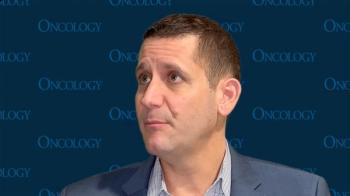
Axitinib/Pembrolizumab Shows Promising Results in Alveolar Soft-Part Sarcoma
The combination of axitinib and pembrolizumab was reasonably well tolerated and showed promising activity in patients with various subtypes of soft-tissue sarcoma, with the benefit seen primarily in those with alveolar soft-part sarcoma, according to a new study.
The combination of axitinib and pembrolizumab was reasonably well tolerated and showed promising activity in patients with various subtypes of soft-tissue sarcoma (STS), according to a new study. The benefit, though, was primarily seen in those with alveolar soft-part sarcoma (ASPS).
Treatment of STS with single-agent immune checkpoint inhibitors have produced some impressive responses, but these are seen in less than 20% of patients. This is “likely related to the underlying complexity of the immunosuppressive tumor microenvironment,” said Breelyn A. Wilky, MD, of the University of Miami Miller School of Medicine. Combining checkpoint inhibition with anti-VEGF agents has shown promise in other solid cancers, since VEGF can help suppress T-cell infiltration and activation.
Wilky presented results of a phase II trial involving 30 STS patients treated with the axitinib/pembrolizumab combination at the Connective Tissue Oncology Society (CTOS) 2017 Annual Meeting, held November 8–11 in Wailea, Hawaii.
The median age of patients was 44.5 years, and 53% were male; 57% were white, and 37% were Hispanic/Latino. Ten patients had ASPS; other histologic subtypes included high-grade undifferentiated pleomorphic sarcoma (5 patients), uterine leiomyosarcoma (4 patients), and other types with two or fewer patients. Most patients had metastatic disease (93%), and the remainder had locally advanced disease (7%).
Among the 29 evaluable patients, the progression-free rate at 12 weeks was 48%. Five patients (17%) had a partial response, 9 (31%) had stable disease, and 15 (52%) had progressive disease.
Among only the ASPS patients, 4 of 9 had a partial response (44%), and another 3 had stable disease (33%), yielding a clinical benefit rate of 78% in this subtype. Among the patients with other subtypes, the clinical benefit rate was only 35%.
The responses with the combination did appear to be durable. Among patients with stable disease or better at 12 weeks, the median duration of response was 29.3 weeks.
The median progression-free survival among all patients was 15.9 weeks, but among ASPS patients the median was not reached. In the non-ASPS patients, it was 13.2 weeks. Compared with non-ASPS patients, ASPS patients had a hazard ratio for progression of 0.23 (95% CI, 0.084–0.630; P = .0278). The median overall survival in the full cohort was not reached, and the 12-month overall survival rate was 60%.
The most frequent adverse events (AEs) of any grade included fatigue (70%), generalized/tumor pain (63%), oral mucositis (63%), and nausea/vomiting (57%). Drug-related serious AEs attributed to axitinib included spontaneous pneumothorax and hypertriglyceridemia (one patient each); those attributed to pembrolizumab included transaminitis, colitis, type 1 diabetes mellitus, arthritis/joint effusion (one patient each), and two cases of seizure, both of which responded well to anti-seizure medications.
Wilky said these results are promising, and the study has expanded and will include 10 more ASPS patients to confirm the combination’s efficacy in this subtype. She added that future clinical trials should include validation of clinical biomarkers of response to immune therapy.
Newsletter
Stay up to date on recent advances in the multidisciplinary approach to cancer.
















































































